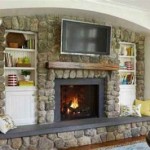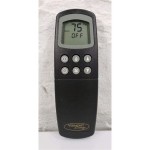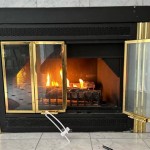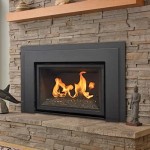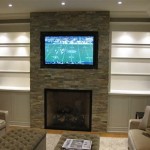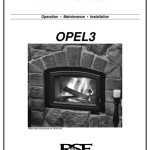Fireplace Screen Repairs: Maintaining Safety and Aesthetics
The fireplace, a focal point in many homes, provides warmth and ambiance during colder months. The fireplace screen, a crucial component of this system, serves to protect occupants from sparks and embers while enhancing the fireplace's aesthetic appeal. Over time, however, fireplace screens can sustain damage, necessitating repair or replacement. Understanding the types of damage, repair techniques, and preventive measures can help homeowners maintain the safety and longevity of their fireplace screens.
Fireplace screens are subjected to intense heat and physical wear, leading to various types of damage. These damages can range from minor cosmetic issues to significant structural problems that compromise the screen's functionality. Identifying the specific type and extent of the damage is the first step in determining the appropriate repair strategy.
Common Types of Fireplace Screen Damage
Several types of damage commonly affect fireplace screens. These include rust and corrosion, mesh tears and holes, frame damage (bending or breaks), and loose or broken hinges and handles. Each type of damage requires a specific repair approach.
Rust and Corrosion: Exposure to heat and moisture can lead to rust and corrosion, particularly in screens made of iron or steel. Rust weakens the metal, potentially causing structural instability and affecting the screen's overall appearance. The severity of rust can range from minor surface discoloration to deep penetration that compromises the metal's integrity.
Mesh Tears and Holes: The mesh component of the fireplace screen is designed to contain sparks and embers. However, repeated exposure to heat and physical impact can cause tears and holes in the mesh. These breaches diminish the screen's protective capacity and increase the risk of fire hazards.
Frame Damage: The frame provides structural support for the mesh and hinges. It can be damaged by accidental impacts, excessive weight, or prolonged exposure to high temperatures. Bending or breaking of the frame can misalign the mesh and compromise the screen's stability.
Loose or Broken Hinges and Handles: Hinges allow the screen to open and close smoothly, while handles provide a secure grip for moving the screen. Over time, these components can become loose, broken, or detached due to wear and tear. Damaged hinges or handles can make it difficult or unsafe to operate the screen.
Diagnosing the specific type of damage is crucial for selecting the appropriate repair method and ensuring the screen's continued safe operation. Neglecting minor damage can lead to more significant problems and potentially necessitate a complete screen replacement.
Repairing Fireplace Screens: A Step-by-Step Approach
Repairing a fireplace screen requires careful assessment, appropriate tools, and adherence to safety precautions. The specific repair method will depend on the type and extent of the damage. Several common repair techniques can be employed, ranging from rust removal and patching to frame straightening and hinge replacement.
Rust Removal: Minor surface rust can often be removed with a wire brush or sandpaper. For more severe rust, a rust converter or chemical rust remover may be necessary. The screen should be thoroughly cleaned and dried after rust removal. Once the rust is removed, applying a heat-resistant paint or coating can help prevent future corrosion.
Mesh Patching: Small tears or holes in the mesh can often be patched using a wire mesh repair kit. These kits typically include a small piece of replacement mesh, wire clips, and pliers. The damaged area should be cleaned and flattened before applying the patch. The patch is then secured with the wire clips, ensuring a tight and secure fit.
Frame Straightening: Bent frames can sometimes be straightened using pliers or a mallet. Care should be taken to avoid further damage to the frame. If the frame is severely bent or broken, welding or brazing may be required. This type of repair should generally be performed by a professional with experience in metalworking.
Hinge and Handle Replacement: Loose hinges can often be tightened with screws or rivets. Broken hinges and handles should be replaced with new hardware. Ensure that the replacement hardware is compatible with the screen's material and design. The new hardware should be securely attached using appropriate fasteners.
Before initiating any repair, the fireplace should be cold and the screen should be removed from the fireplace opening. Wear appropriate protective gear, such as gloves and safety glasses, to prevent injury. If the repair is beyond one's skill level, consulting a professional is advisable.
Preventive Maintenance for Fireplace Screens
Preventive maintenance is crucial for extending the life of a fireplace screen and minimizing the need for repairs. Regular cleaning, proper storage, and careful handling can significantly reduce the risk of damage. Implementing a routine maintenance schedule can help ensure the screen remains in good condition and provides reliable protection.
Regular Cleaning: Fireplace screens should be cleaned regularly to remove soot, ash, and other debris. Use a soft brush or vacuum cleaner with a brush attachment to remove loose particles. For more stubborn dirt, a mild detergent and water solution can be used. Ensure that the screen is completely dry before reinstalling it.
Proper Storage: When the fireplace is not in use, store the screen in a dry and protected location. This will help prevent rust and corrosion. If storing the screen in a damp environment, consider applying a rust-inhibiting coating. Protect the screen from physical damage during storage by wrapping it in a protective material such as bubble wrap or cloth.
Careful Handling: Avoid dropping or bumping the screen, as this can damage the frame or mesh. When moving the screen, lift it carefully by the handles or frame. Avoid placing heavy objects on the screen. Regular inspection of the screen for signs of damage is also essential for early detection and prompt repair.
Heat-Resistant Coating: Applying a heat-resistant coating or paint to the screen can help protect it from the damaging effects of high temperatures. This coating can also help prevent rust and corrosion. Choose a coating specifically designed for use on fireplace screens and follow the manufacturer's instructions for application.
By implementing these preventive maintenance measures, homeowners can significantly extend the lifespan of their fireplace screens and reduce the need for costly repairs. Regular care and attention will help ensure that the screen remains a safe and attractive addition to the fireplace.
Choosing the correct repair materials is significantly important. Using inferior products may lead to a repeat of the original problem, or even create a new one. For example, using paints not designed for high temperatures can release harmful chemicals when heated, which can be breathed by the occupants of the home. Selecting the correct gauge wire mesh is also important to ensure that sparks do not escape through the damaged area. Always follow the manufacturer's guidelines for any repair product being used.
In some cases, the damage to a fireplace screen may be so severe that repair is not a practical or cost-effective option. In these situations, replacing the screen is the best course of action. When selecting a new fireplace screen, consider factors such as the size and style of the fireplace, the material of the screen, and its safety features. A well-chosen replacement screen will provide years of reliable protection and enhance the aesthetic appeal of the fireplace.
Professional fireplace maintenance services can also be engaged to inspect and repair fireplace screens. These professionals have the expertise and equipment to address a wide range of issues, from minor repairs to complete screen replacements. Engaging a professional can provide peace of mind and ensure that the screen is properly repaired or replaced, maintaining the safety and functionality of the fireplace.
The proper operation of the fireplace is also relevant to the longevity of the screen. Overloading the fireplace with wood or using inappropriate fuels can lead to excessive heat and spark production, which can damage the screen. Following the manufacturer's guidelines for fireplace operation and using the correct type of fuel will help minimize the risk of damage to the screen. Regular cleaning of the fireplace and its components will also help maintain efficient and safe operation.

Request A Safety Screen For Gas Fireplace Heat Glo

Fireplace Screen Installation Archives A Step In Time Chimney Sweeps Repair Inspection Virginia Beach Norfolk Chesapeake Richmond Suffolk Newport News

Pleasant Hearth Waverly 3 Panel Fireplace Screen In Colonial Brown Fa092sa The Home Depot

Gas Fireplace Repair Services In Arlington Tx Dallas 1st Choice Residential

Common Gas Fireplace Problems And Repair With S

Fireplace Repair East Hunt Stone
The 10 Best Fireplace Repair Services In Moreno Valley Ca 2024

Fireplace Door Installation Chimney Sweeps Repairs And Installations

Fireplace Repair Kleen Sweep San Diego Fireplaces

Fireplace Installation Repair Montgomery County Md All Pro Chimney Service
Related Posts


